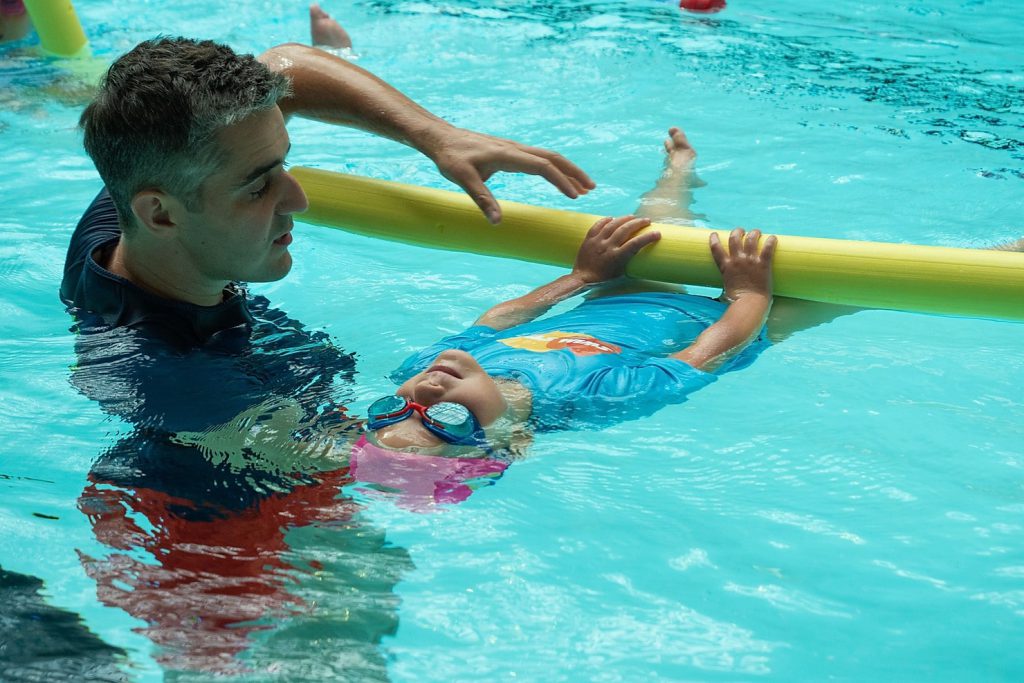My child’s progress – How do I measure my child’s progress?
Teaching repetitive movements by swim coaches has several positive points. It teaches children muscle memory, gradually develops skills and eliminates any water-related blockages. Thus, as your child grows, you will often see him or her repeating the same exercises in the pool with a possibly distorted visual impression.
Measuring my child’s progress
First of all, you don’t learn water safety or swimming in 2 strokes of your legs (paddling yes maybe)!
Then, each child evolves at his or her own pace, and that’s good. The small group classes with the coach in the water allow each student to be stimulated and challenged.
From the very beginning, children reproduce by mimicry: make bubbles in the water, swim by doing the little dog, float by doing the starfish, and have fun!
Coaches therefore often work in workshops to develop the skills of each person with a specific objective. To ensure that a child, from the age of 3, is safe in the water and to give him or her all the basics necessary to learn to swim .

Starfish is the safe position to breathe, rest or call for help
Priority to safety
The program
AUTO-RESCUE® PROGRAM
is an anti-drowning program designed specifically for 3-4 year olds. It’s been around since 2016, so it’s proven to work. Its objective is to teach children how to save themselves by assimilating the survival reflexes in case of a fall in the water as well as the basics of swimming (breathing, floating…).
The program
APPRENTICESHIP
is usually started around 5 years old. Here too, safety is a priority. as in SELF-RESCUE®, you learn to put your head under water, to float and to move. The child is a little older so he learns faster.
The objective of the level? To be able to swim safely for 25 meters and be autonomous in the water. This also marks the beginning of thelearning of swimming techniques : back crawl, crawl and breaststroke. The butterfly, both very technical and physical, comes later.
AUTO-RESCUE program for children from 3 years old
Floating, swimming, getting out of the water = AUTO-RESCUE® test validated!
The exercises worked on prepare for the placement test. For example, making a child jump into the water teaches him to hold his breath. This is essential for his future experiences with the aquatic environment, at all ages. The same with all the other exercises: blowing bubbles with your mouth, fetching a ring underwater…
Another essential exercise is to know how to turn over on your back to put yourself in THE safest position, no matter what your age or level: the starfish on your back.
Learning to control your breathing and floating will be among the first skills to be acquired, and this through various and often repetitive exercises.
As soon as a child checks off all the boxes, he or she is ready to enter the higher program:
- Jump into the water without equipment
- Turn over and do the starfish (back float) for 5 seconds
- Walk 5 meters with the little dog to return to the edge
- Getting out of the water by yourself
These very concrete skills are a good way to follow your child’s evolution, knowing that an average of 10 to 15 sessions have been observed for a child to be safe in the water.





